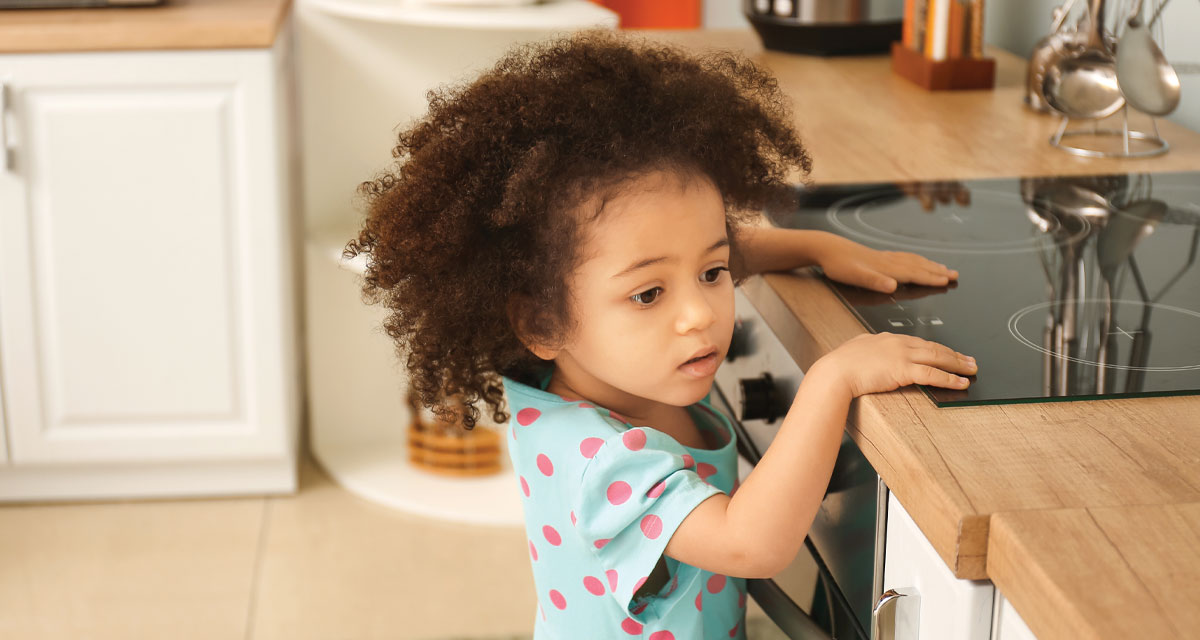Each month this series will provide important facts and tips surrounding child safety to support parents and caregivers as they navigate reducing risks and creating the safest environment possible for the children in their lives.
Did you know that National Burn Awareness Week is this month?
In honor of “National Burn Awareness Week,” February 6th-12th, this month’s Child Safety Series will be sharing some of the American Burn Association’s resources and tips as an opportunity to bring awareness to common risks of burns among children and teens, in order to help the prevention of injuries.
The “American Burn Association (ABA)” was established to “Promote and support burn-related research, education, care, rehabilitation, and prevention.” Through their work with communities across the world, they have been able to help families create simple environmental and behavioral changes that, in turn, save lives.
Sobering Statistics to Consider
- More than 73% of burn injuries happen inside the home.
- Nearly 75% of burns in young children are from liquid, hot tap water, or steam.
- Of all burn-related injuries of hospitalized children, ages 4 and younger, 65% are due to scald burns and 20% to contact burns.
- Fires kill about 500 children ages 14 and under each year, with the majority being residential fires.
Simple Safety Steps to Incorporate in Your Home
Prevention is always the first place to start to avoid the worst from happening. Take inventory of the most common areas in your home that could lead to burns, such as your kitchen and bathrooms. Make sure all adult family members are on the same page when it comes to prevention and safety protocols you decide to abide by in the home. Remember that creating a sense of caution and bringing awareness to fire and burn safety can never be done too early for your children!
Here are a few tips from the ABA to help you create a plan for your home.
Preventing Contact Burns
- Create a rule to keep your stove top clean and empty of nonessential items to help avoid accidental melting, burning or fires from happening.
- Have multiple hot pads and oven mitts readily available when cooking, both inside the kitchen and outdoors at the grill, in the event something needs to be moved quickly.
- Glass and many metal fireplace doors can remain hot for 1 hour+ after use. Make sure the fireplace on/off switches are out of the reach of children.
- After use, always unplug hot tools, such as hair straighteners and curling irons, with your best tactic being to treat them as they are always hot.
- Never overload outlets or power strips with too many cords, and always use protective covers for outlets to prevent fingers from going inside.
Preventing Scald Burns
- Set your water heater at 120 degrees F, or right below the medium setting, to keep water temperatures at the sink, bath or shower from getting too extreme.
- Create a safe “kid-free zone” in your kitchen measuring approximately 3 feet around the stove or any other areas where hot items are prepared or served.
- Never leave the stove unattended when using the stove if little ones are around. Place handles of pots turned away and use the back burners whenever possible to keep hot items away from the edge, where little hands can touch.
- Always have covers for cooking appliances or pots and pans where oil may splatter.
- When drinking and serving hot beverages, try to use travel mugs with lids when possible, but more importantly, don’t keep drinks on low tables or near the edge.
Taking Action If Your Child Experiences a Burn
Depending on the severity of the burn, treatment recommendations vary. While many adults are familiar with burns ranging from first to third degree, they may have difficulty identifying which is which and the proper steps to treat each one effectively.
A general safety measure is always to have a first-aid kit easily accessible, as well as any important documents, such as lists of medications your child is currently taking and phone numbers for contact information for pediatricians and emergency contacts. If you are unsure about the severity of a child’s burn, but have concern, don’t wait to head to your nearest emergency room, or call 911.
Helpful Resources to Learn More
- The American Burn Association (ABA)- {ONLINE ARTICLE HYPERLINK:https://ameriburn.org/prevention/prevention-resources/}
- Healthy Children.org Burn Parent FAQs – {ONLINE ARTICLE HYPERLINK:https://www.healthychildren.org/English/safety-prevention/all-around/Pages/First-Aid-For-Burns.aspx}



















